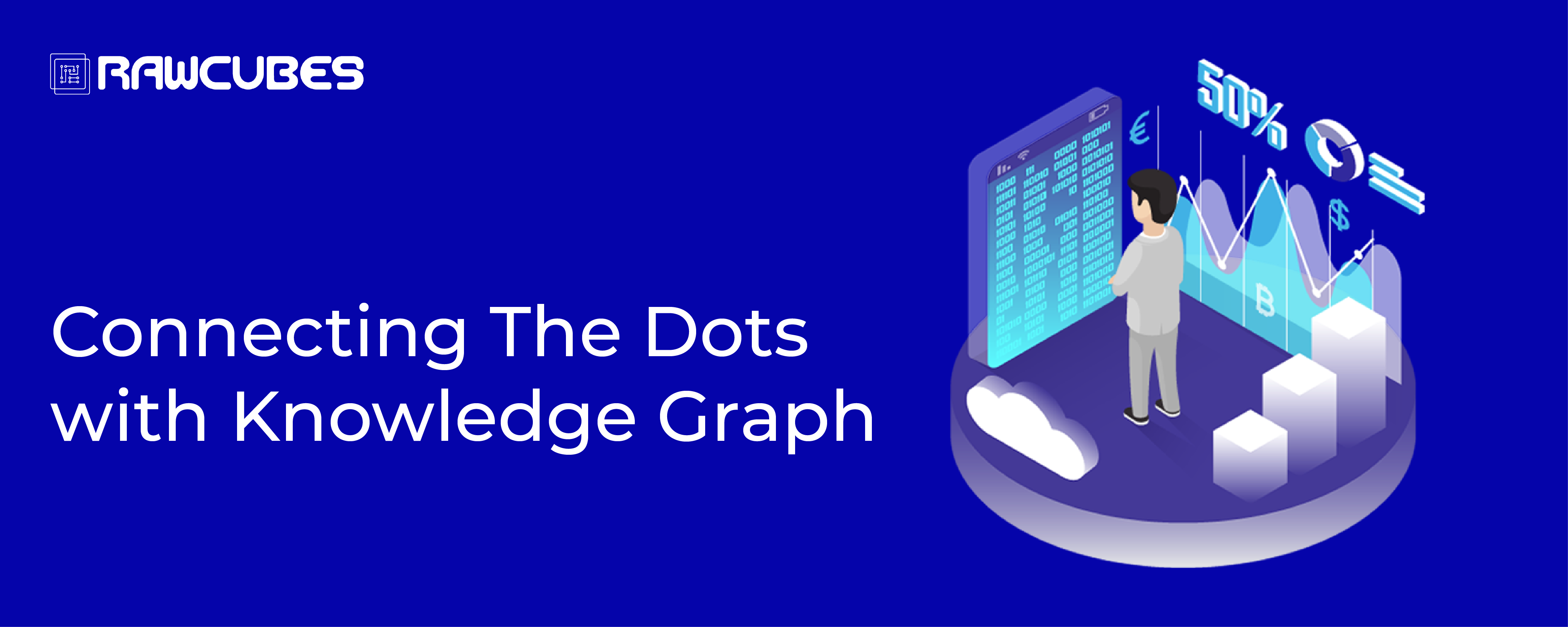Connecting The Dots with Knowledge Graph

Over the years, there has been a massive surge in the amount and type of data that is being generated from different sources. Most of this data is unstructured and complex. This poses a major challenge for businesses who want to get quick and meaningful insights from this complex, a disorganized, yet valuable pool of data.
For a long time, traditional/relational databases have been ideal for storing structured data in tables with columns that are of a particular type with several rows consisting of defined types of information. Due to its rigid structure, developers and applications have to strictly structure their data to be used in their applications. The indication to other rows and tables is done by making reference to primary key attributes through foreign key columns. The calculation of JOINs is done at the time of querying by mapping primary and foreign keys of all the rows in the connected tables. The more the relations, the more the number of JOINs required. Hence, the operations involve heavy computing and memory power, not to forget the huge overhead cost. To limit the heavy cost associated with this process, the data is denormalized to limit the number of JOINs required. However, this results in the loss of data integrity of the relational database.
These limitations have led one to shift their focus to graph databases which are a viable alternative for linking disparate data sources. Graph databases make it easy for programmers, users, and machines to interpret the data and derive insights through a simple representation of entities and links between data. This in-depth understanding is critical for machine learning technologies that use context-based machine learning for reasoning and drawing inferences. Graph databases allow one to construct simple and sophisticated models that look quite similar to the problem domain by interconnecting nodes and relationships. It allows the data to stay in the same way as it appears in origin or in the real world making it easy for the user to query and view the data from any perspective and support various use cases.
Hence, one can see from the above that to enable quick and intuitive business decisions, it is essential that the data be stored in a way that one can access it readily without dealing with various complexities that come with traditional databases. Moreover, businesses today are relying heavily on information from various digital channels to make informed and intelligent decisions for future growth and performance of their business. Traditional databases proved futile when it came to challenges like ad-hoc addition of new data structures, acquisition of new companies, and combining unstructured data with structured information.
DataBlaze: Knowledge Graph-based Data Platform
DataBlaze is a knowledge graph-based data platform for faster Data Discovery Solutions. Once data is ingested, DataBlaze uses machine learning (ML) and artificial intelligence (AI) models to automatically discover the terms and relationships from the incoming data, and a context/business identification is given to the data, i.e. knowledge about employee or customer by merging knowledge and relationship. The automatic mapping of patterns with the graph structure saves time and manual efforts of a subject matter expert (SME). The SME only needs to provide the labels and approve relationships. Hence, businesses can save time and get standard functionality off the shelf.
DataBlaze is flexible enough to store knowledge graph into a wide variety of graph databases like neo4j, janusgraph etc. The incoming data (source data) can be stored in variety of data storing platforms currently available in the market. It may be on premise/cloudDB.
DataBlaze has the capability to store or transport data into Object Store, HDFS, BigQuery. In future releases, DataBlaze will also be able to store source data/raw data into GRAPH DB as well.
So, don’t you think it’s about time that you contacted us for a first-hand demo of DataBlaze?